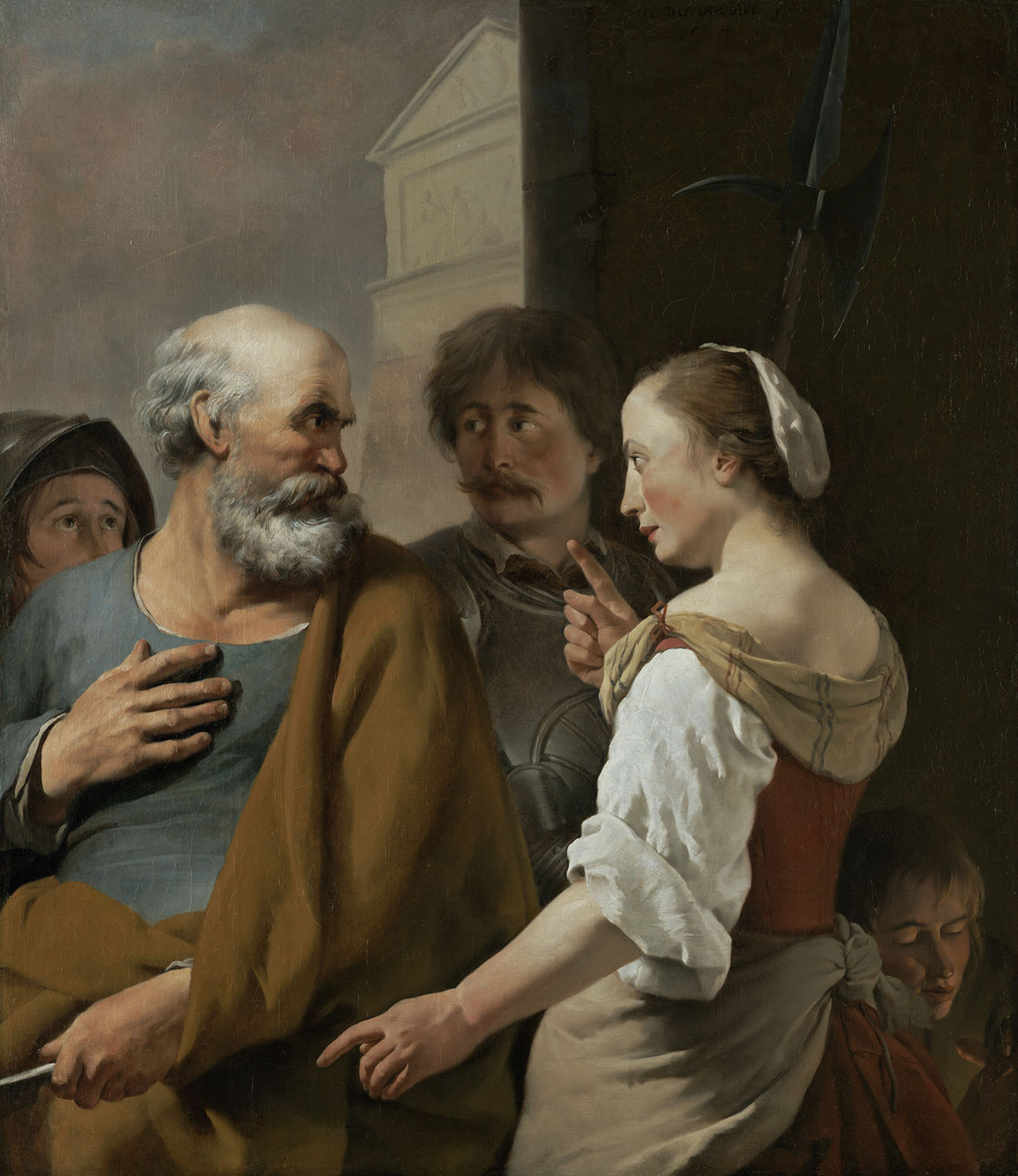Denial of Peter
c. 1663
Karel Dujardin (Dutch, 1622–1678)
Oil on canvas
Norton Simon Art Foundation
In the early morning hours following Christ’s arrest, Peter waited outside the house of the high priest Caiaphas, where Jesus stood trial. Three times Peter was identified as Jesus’ companion, and three times the apostle denied it. Here Dujardin focuses sharply on Peter and the maid who recognizes him, suggesting that this is the second denial, as described in Matthew 26:71–72: “and again [Peter] denied it with an oath.” The apostle’s testimony is emphasized by the placement of his hand over his heart. The moment’s high tension is conveyed by the maid’s accusatory look and gesture, Peter’s defensive response and the off-center placement of both figures. Dujardin’s use of strong chiaroscuro and a close-up presentation of unidealized figures suggests his familiarity with the Caravaggesque tendencies in Dutch Baroque art. Finely painted details, such as the maid’s white sleeve, and the smooth facture throughout, however, demonstrate Dujardin’s affiliation with Dutch classicism. Though he was primarily known as an accomplished landscape painter, the artist also painted a range of subjects drawn from history and the Bible, as well as portraits of Amsterdam’s elites. He enjoyed considerable success during his career.
Looking Is Not Seeing
How can art be used to help train medical professionals? The program “Looking Is Not Seeing” brought nursing students from Mount St. Mary’s University in Los Angeles to the Norton Simon Museum in 2019 and 2020. Museum educators led small groups in close-looking sessions with paintings to help students hone their powers of observation. First, they spent time quietly observing an object before offering descriptions of what they saw, after which a Museum educator shared historical context about the work. Karel Dujardin’s Denial of Peter was featured in the program because its narrative is not immediately apparent, allowing students to debate the subtle distinctions between description and interpretation. The program was organized by Michelle Brenner, the former head of education at the Museum, and Sarah Shealy, former assistant professor of Nursing at Mount St. Mary’s University.
